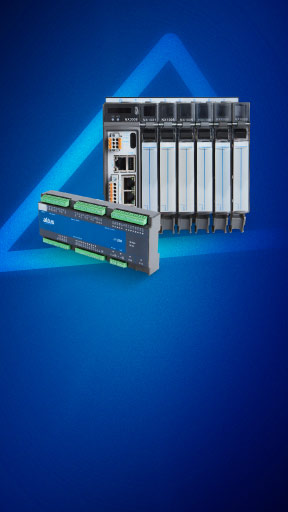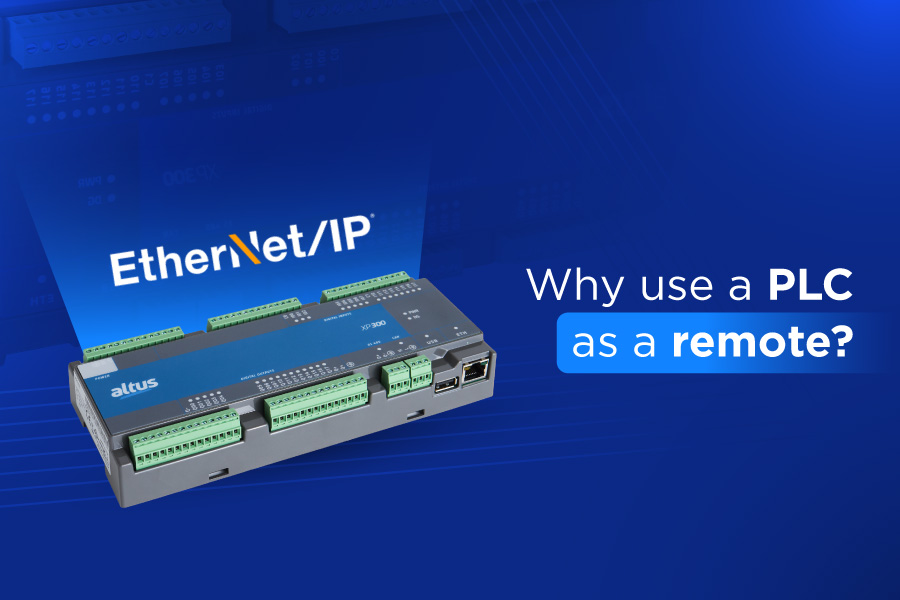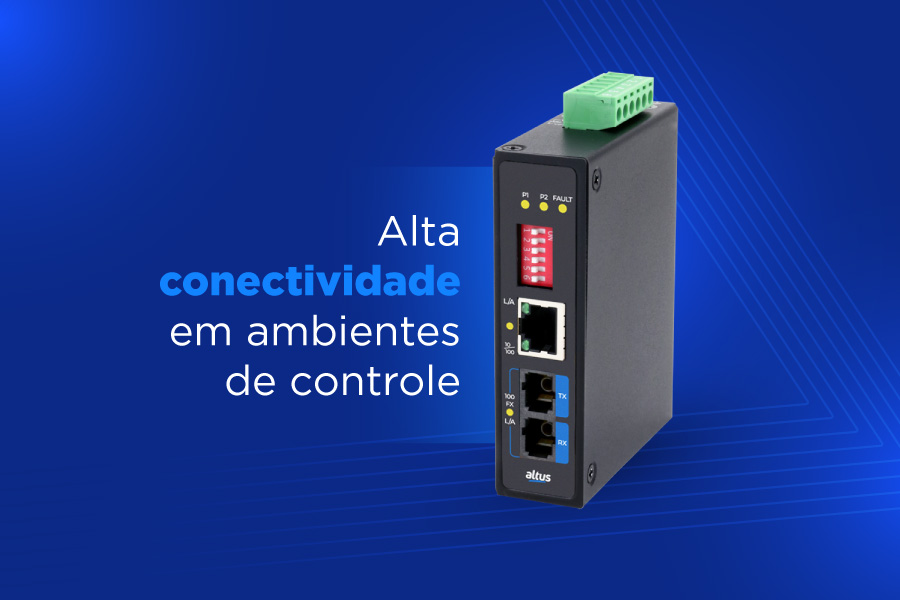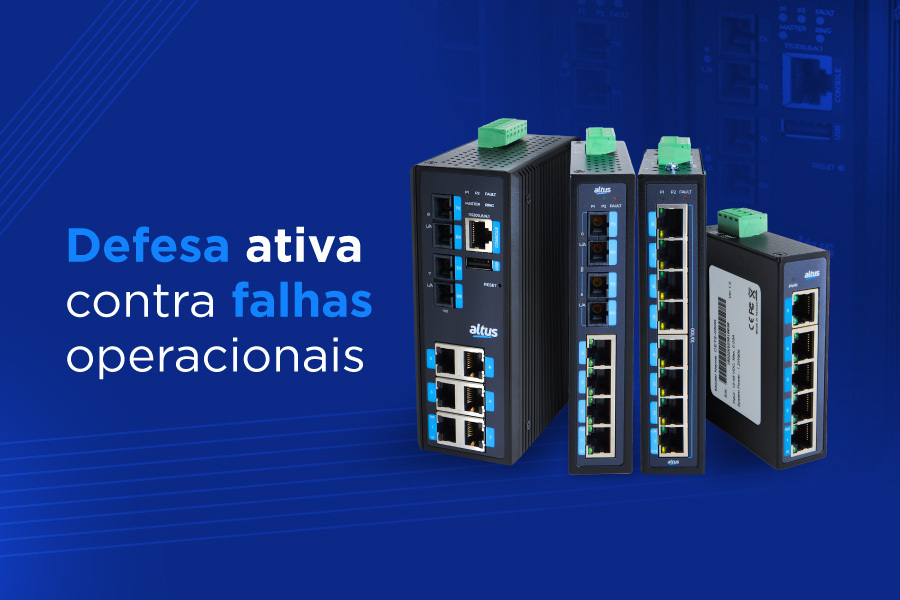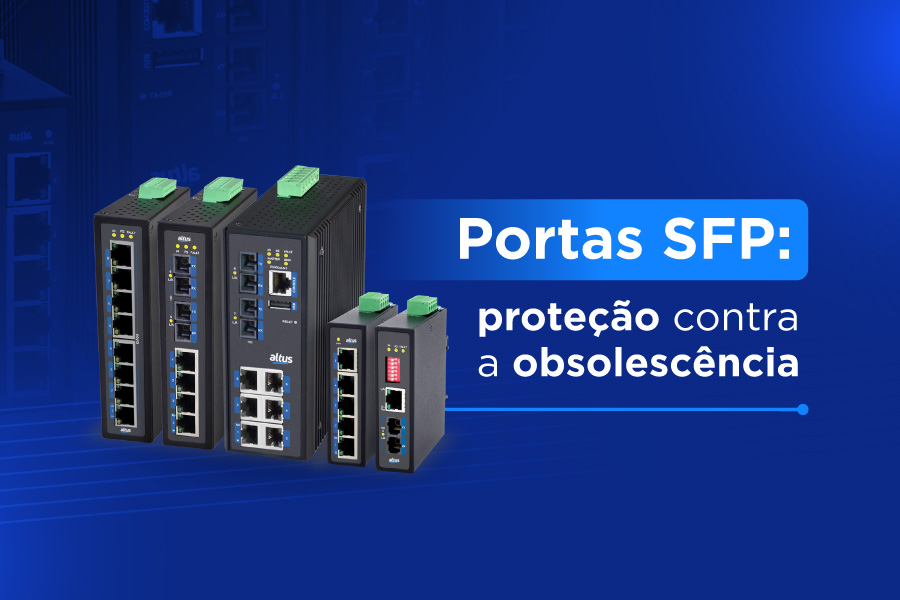Industrial Ethernet, as the name suggests, is a physical means of communication based on Ethernet technology and used in industry to connect intelligent systems and devices. Currently, there are two communication standards that use this physical medium: Fast and Gigabit Ethernet. Today, let's learn a little more about these communication models, their differences, advantages and why Gigabit Ethernet is gaining more and more space in Industry 4.0.
What is the Ethernet standard?
As we have already seen in this publication about Serial and Ethernet physical media, the standard was created by engineers at Xerox PARC in 1970 to provide a stable interconnection between computers in the enterprise. The effectiveness of this means has brought tangible benefits, solution for most existing computing architectures and the promise of simple scalability for all network topologies and sizes. Although it was not originally designed to work in industrial automation, it has been successfully improved to meet the requirements of data communication between industrial processes and, today, it is the most used network in the world for exchanging information between devices.
Fast Ethernet x Gigabit Ethernet
The most widespread standard between LAN and WAN networks, the Fast Ethernet model, also known as a 10/100 network, has a nominal transmission rate of up to 100 Mbps, thus being compatible with the vast majority of devices used in both industry and the market. of consumption. Some of its advantages are ease of implementation, management and maintenance. Another benefit is that networks and devices of this type are cheaper compared to more current technologies.
Gigabit Ethernet connections bring much more speed to data transfer. Also known as 10/100/1000 or Giga Ethernet, these networks support speeds of up to 1,000 Mbps (1 Gbps), 10x more than the Fast Ethernet model. In the consumer market, the standard is present in high-technology embedded devices, such as TVs and smartphones. This update ends up bringing more agility to file transfers and applications such as high-quality video streaming.
Gigabit Ethernet and Industry 4.0
The emergence of Industry 4.0 and the consequent evolution of PLCs, HMIs and other devices present in the most different applications had a direct impact on the volume of data transmitted over communication networks. Until a few years ago, the vast majority of sensors used in industry emitted only one type of signal. Today, however, with the need for quick access to business operation information to make timely decisions, field devices needed to deliver a much larger volume of data to the control system.
A temperature sensor, for example, more than just indicating this type of variable, also communicates additional information to the control system, such as lifetime and level of vibration in the environment. The most modern equipment even has an online diagnostics page and also allows the device to be calibrated remotely, making it fully compliant with connectivity of IoT (Internet of Things) environments.
This increase in data volume required an increase in the network structure, requiring, in many cases, the implementation of Giga Ethernet architectures for communication between the PLC and other devices present in the application. To learn more about Industrial Ethernet networks, we recommend the post What is Industrial Ethernet and how important is it for Industry 4.0, available here, on the I&A Blog.
